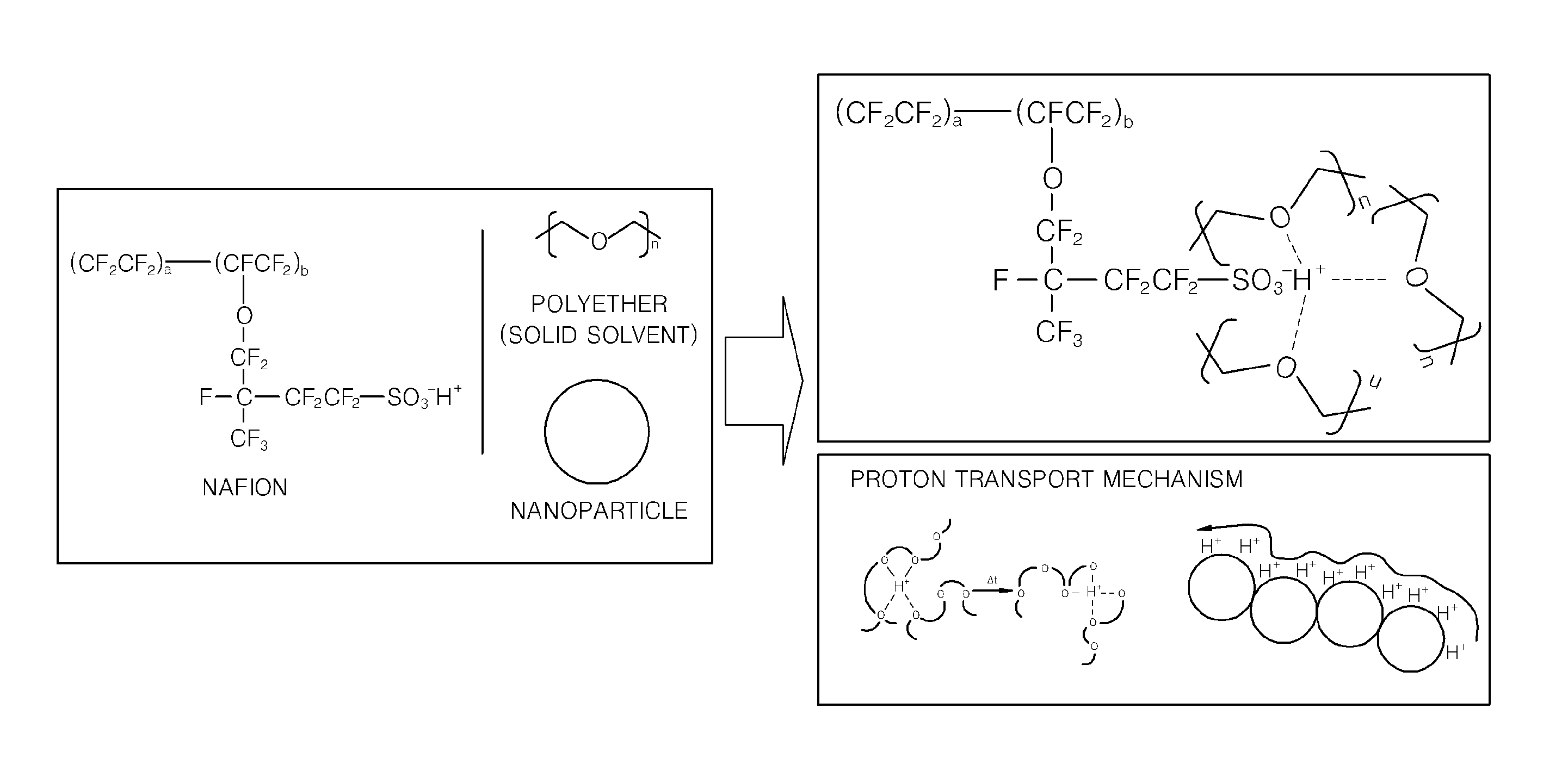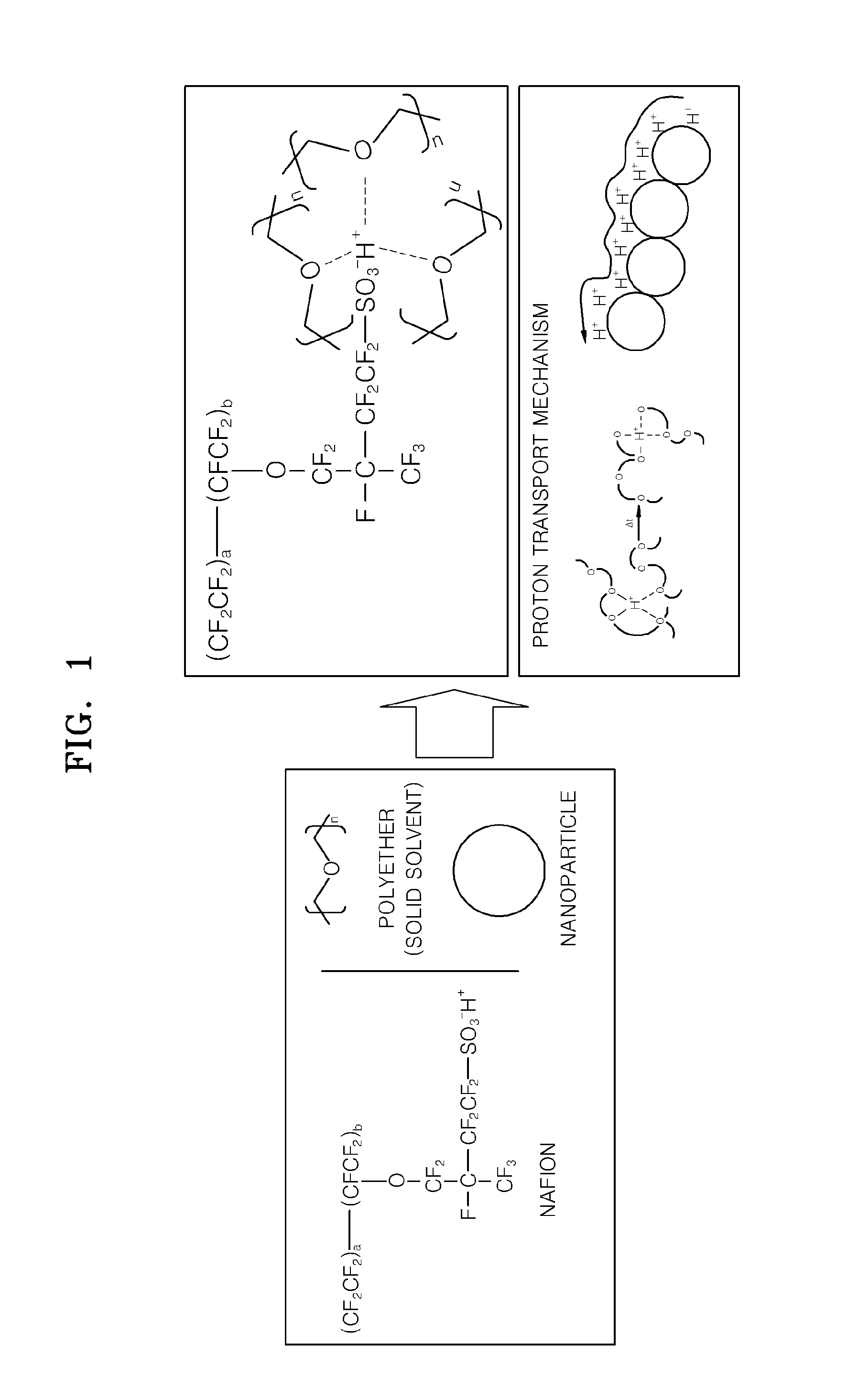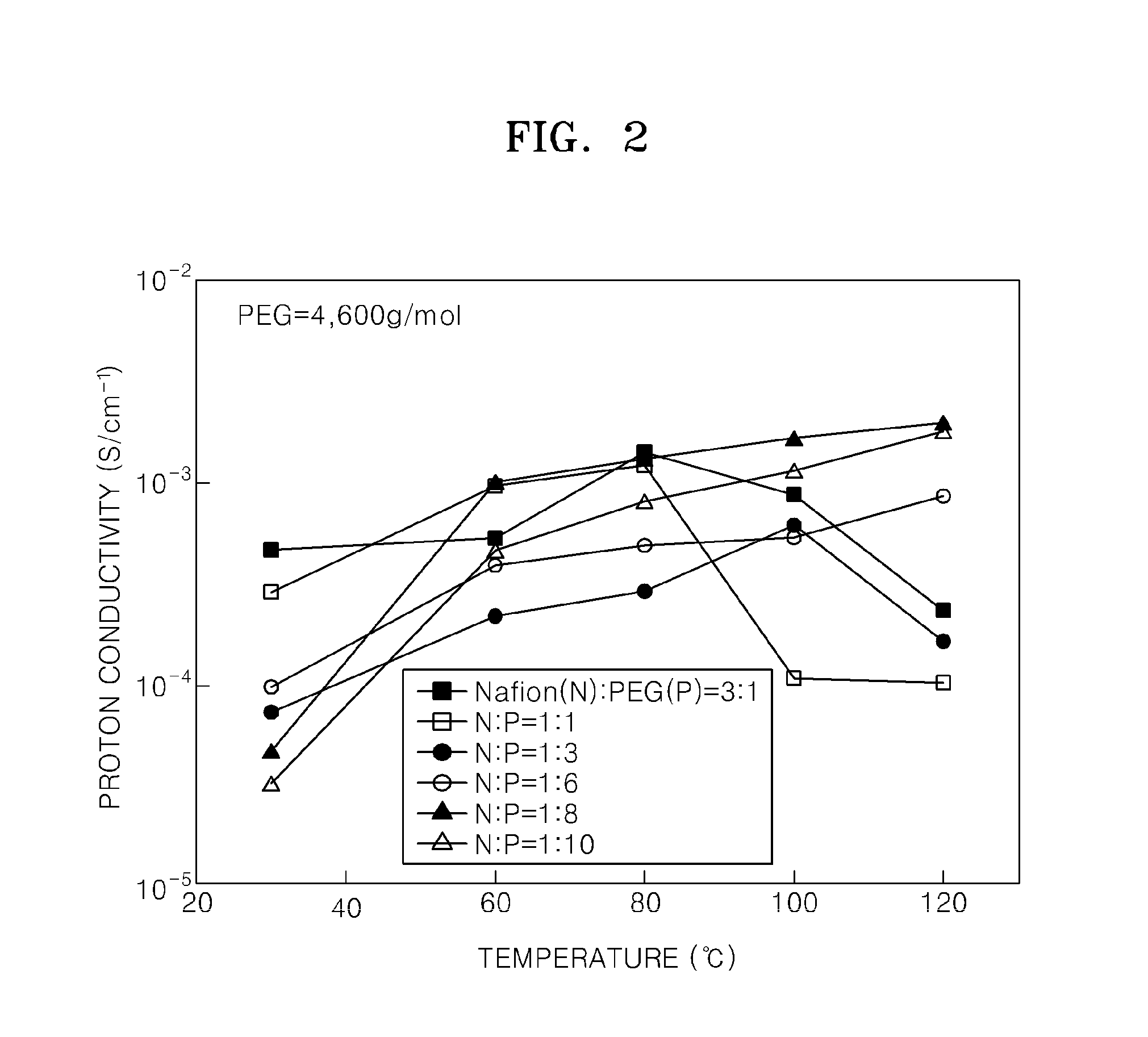Solid proton conductor and fuel cell including the same
a fuel cell and solid proton technology, applied in the direction of conductors, cells, electrochemical generators, etc., can solve the problems of low yield of these processes, volatile heterocyclic compounds, phosphoric acid, etc., and achieve good proton conductivity
- Summary
- Abstract
- Description
- Claims
- Application Information
AI Technical Summary
Benefits of technology
Problems solved by technology
Method used
Image
Examples
embodiment i
of an Electrolyte Membrane
[0070]Molecular weights of repeating units of NAFION and polyethylene glycol (PEG, Mw=4,600 g / mol) were calculated, and then electrolyte membranes were fabricated while varying the molar ratio of the NAFION and the PEG as shown in Table 1 so as to determine a proper blending ratio of the NAFION and the PEG. The molecular weight of the repeating unit (—C7HF13O5SC2F4—) of the NAFION is 544 g / mol, and the molecular weight of the repeating unit (—CH2—CH2-0-) of the PEG is 44 g / mol. Table 1 shows the relative weights of NAFION and PEG when the molar ratio of the NAFION and the PEG is 3:1, 1:1, 1:3, 1:6, 1:8, and 1:10. In Table 1, the total weight of the NAFION and PEG is constant at 1 g.
TABLE 1Weight of PEGNAFION:PEG molar ratioWeight of NAFION (g)(g)3:10.9740.0261:10.9250.0751:30.8050.1951:60.6730.3271:80.6070.393 1:100.5530.447
[0071]1 g of the NAFION and PEG was dissolved in an acetonitrile / water / ethanol solvent (acetonitrile 9 g / water 1 g / ethanol 3 g), and th...
embodiment ii
f an Electrolyte Membrane
[0075]A solution containing NAFION and PEG (Mw=46,000 g / mol) (NAFION:PEG molar ratio=1:8) was prepared in the same way as in Embodiment 1, and titanium oxide nanoparticles (AMT 600, Tayca corp., Japan) doped with an acid were added to the solution.
[0076]The acid doped titanium oxide nanoparticles (NP) were prepared by agitating titanium oxide nanoparticles in 20% by weight of a phosphoric acid aqueous solution for more than 6 hours, repeatedly centrifuging and washing the agitated mixture, and keeping the mixture in a vacuum oven for more than a day.
[0077]1, 5, 10, 20, and 30 parts by weight of the titanium oxide nanoparticles were respectively added to the solution based on 100 parts by weight of the total weight of the NAFION and the PEG so as to prepare solutions having different concentrations of the titanium oxide nanoparticles. Thereafter, electrolyte membranes were fabricated using the solutions in the same way as in Embodiment I.
embodiment iii
an Electrolyte Membrane
[0078]In Embodiment III, an electrolyte membrane was fabricated in the same way as in Embodiment II except that 20% by weight of an aqueous solution of acetic acid and 20% by weight of an aqueous solution of sulfuric acid were respectively used instead of using 20% by weight of an aqueous solution of phosphoric acid to form the acid doped titanium oxide nanoparticles. 5 parts by weight of titanium oxide nanoparticles doped with an acid were used based on 100 parts by weight of the total weight of NAFION and PEG.
PUM
| Property | Measurement | Unit |
|---|---|---|
| Percent by mass | aaaaa | aaaaa |
| Percent by mass | aaaaa | aaaaa |
| Weight | aaaaa | aaaaa |
Abstract
Description
Claims
Application Information
 Login to View More
Login to View More - R&D
- Intellectual Property
- Life Sciences
- Materials
- Tech Scout
- Unparalleled Data Quality
- Higher Quality Content
- 60% Fewer Hallucinations
Browse by: Latest US Patents, China's latest patents, Technical Efficacy Thesaurus, Application Domain, Technology Topic, Popular Technical Reports.
© 2025 PatSnap. All rights reserved.Legal|Privacy policy|Modern Slavery Act Transparency Statement|Sitemap|About US| Contact US: help@patsnap.com



